The Low Bb key
The low Bb key is located on the long joint and is operated by the left thumb. The low Bb key only works in the lowest octave of the bassoon. Higher octave B-flats are played using the right thumb Bb key.
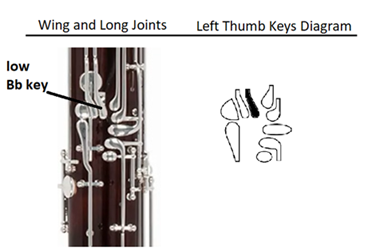
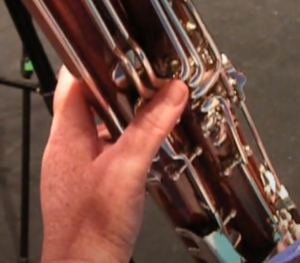
Fingering
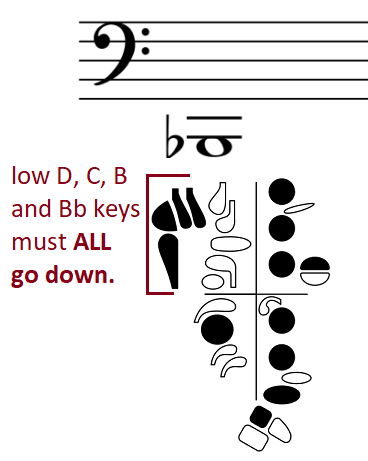
NOTE: The low B and low Bb keys are not connected to each other. You must press both. Press all four low thumb keys (low D, C, B, and Bb) when playing low Bb.
Response
As long as your embouchure is soft and your lower jaw is relaxed (not pushing up on the reed), low Bb is one of the easier low notes.

If you have trouble getting low Bb to speak, try the suggestions below.
- Soak your reed
- “Hot Pizza” mouth
- Space the teeth
- Soft lips
- Low back of the tongue
- slow, warm, steady air
- firm articulation
- cover all tone holes completely
- low E key must press the whisper-key pad tightly against the bocal vent
- Low F, E, D, C, B, and Bb keys must be pressed
- Tip opening of the reed at least the thickness of a nickel. A reed that is too closed at the tip will not play low notes.
Intonation & Tone
Just like all of the other notes below the staff, low Bb tends to be sharp.
- soft lips
- open oral cavity
- space between the teeth
- back of the tongue low in the mouth
- Hot pizza mouth
Matching Pitch on Low Bb
Play Matching Pitch on Low Bb to work on the intonation and tone quality of low Bb.

Bb on the Down Low
Use the lower half of your left thumb to hold down the low D and C keys and use the upper end of your thumb to press the low B and Bb keys at the same time. This will take practice, but in time your thumb will become very agile if you keep your hand relaxed and avoid squeezing when pressing the low keys.
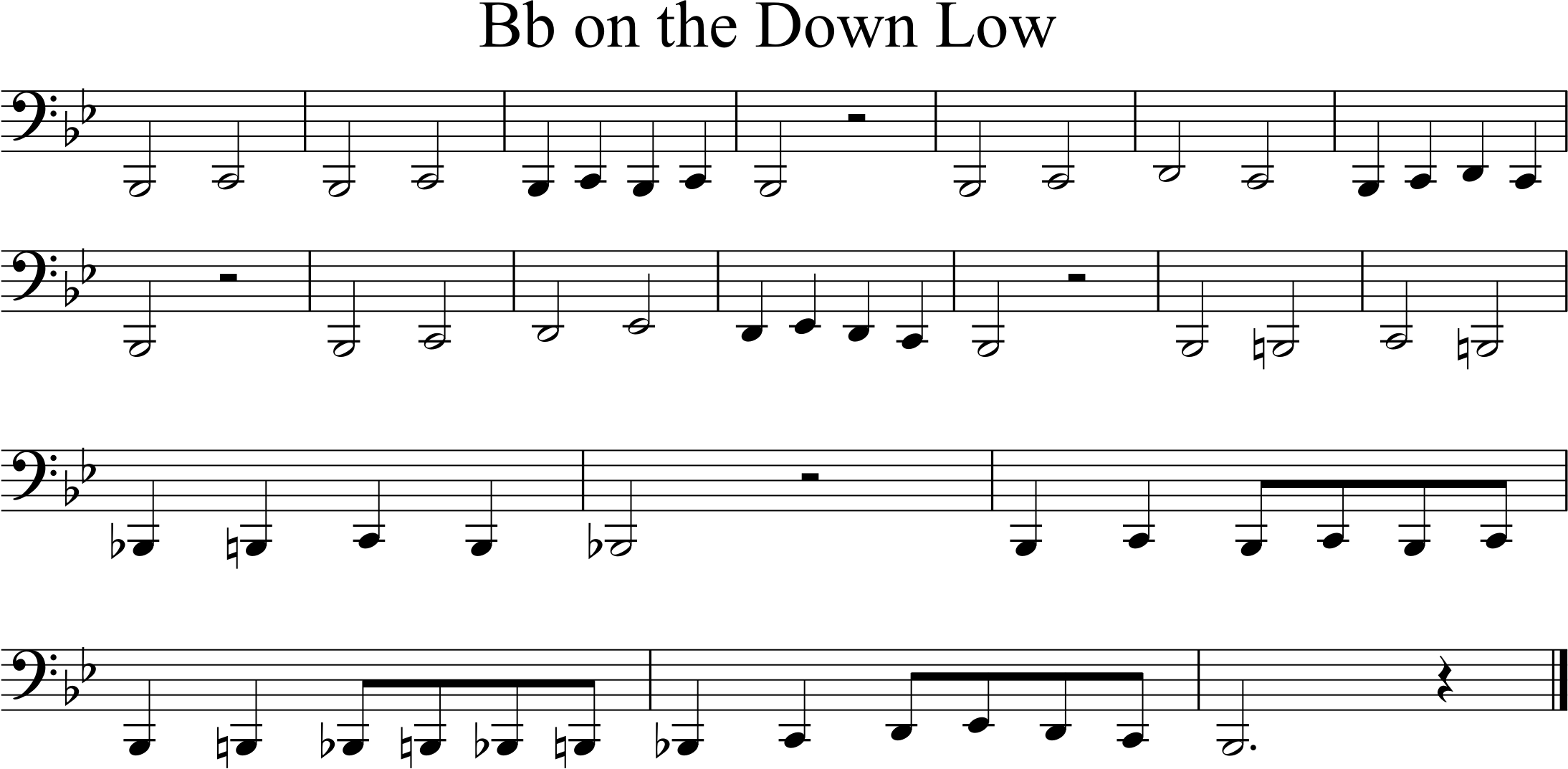

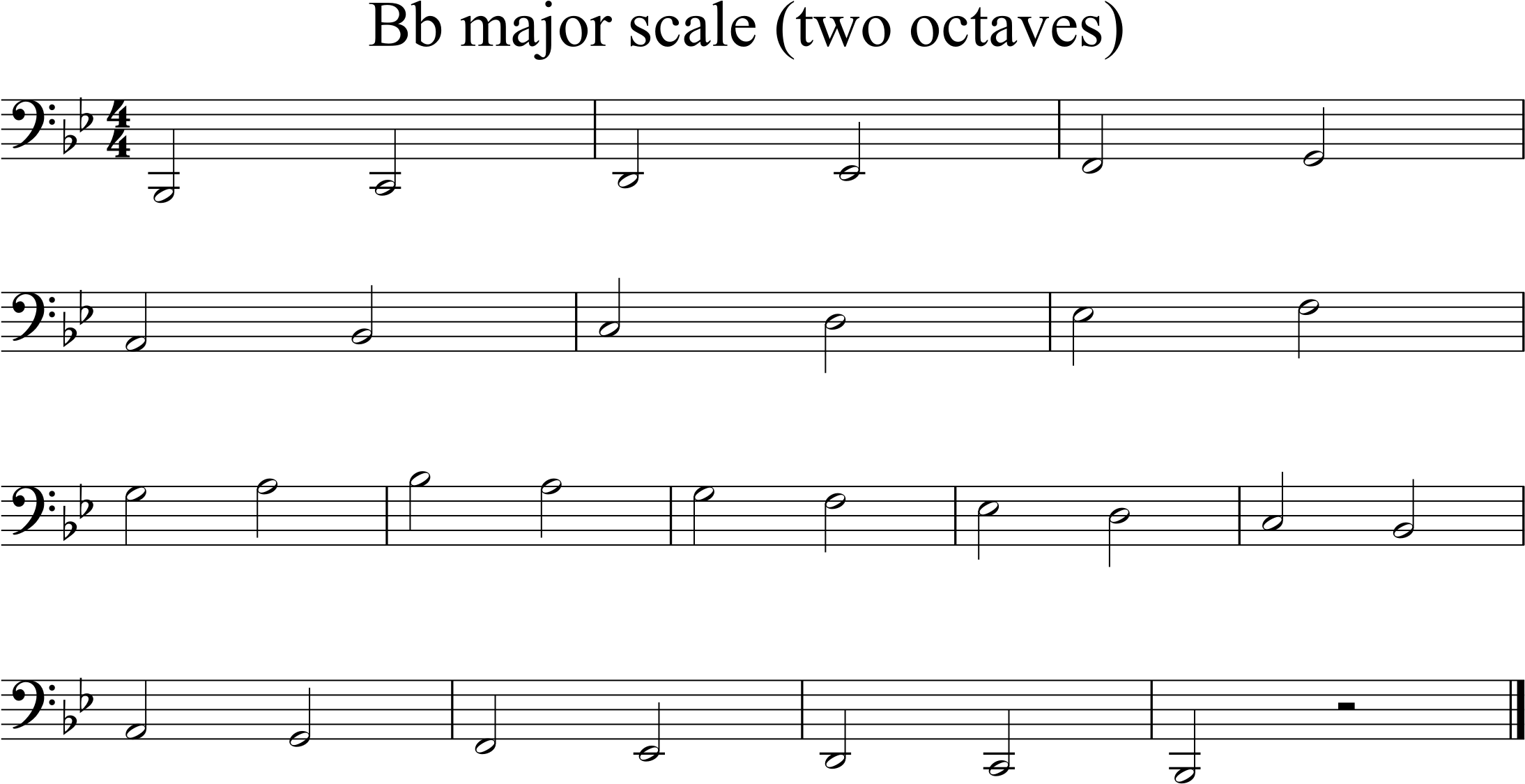
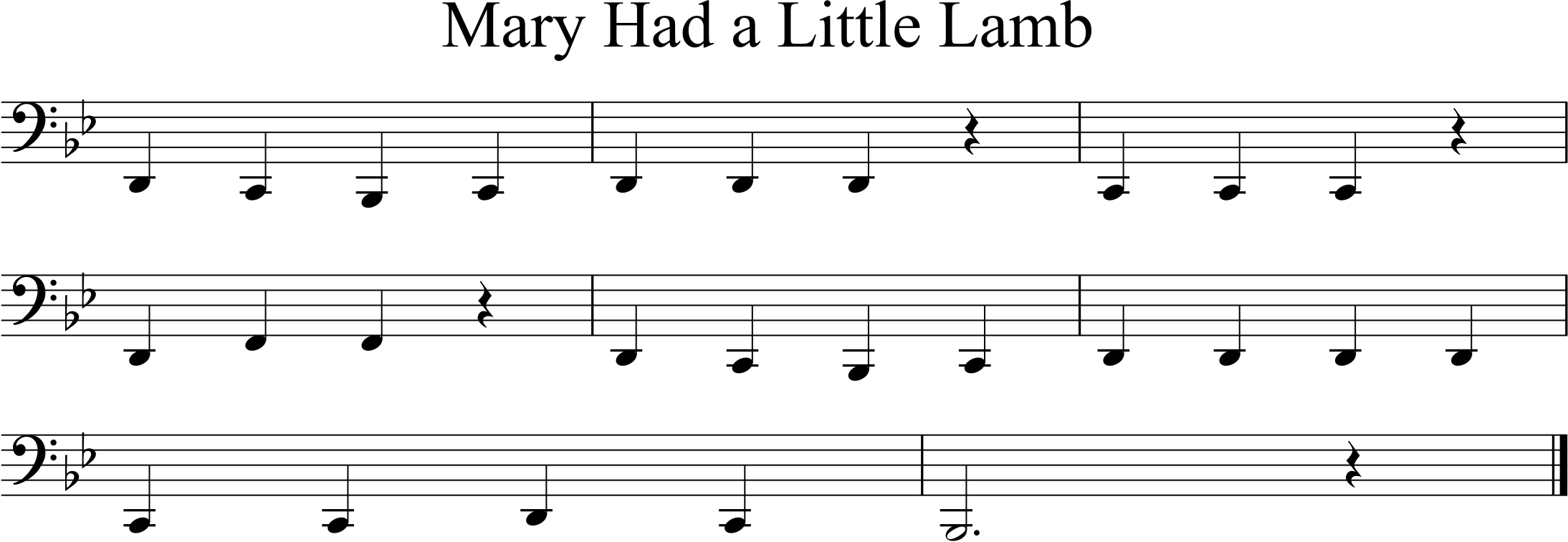


Feedback/Errata